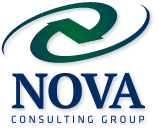At The Nova Consulting Group we continually advise our clients to continually evaluate and adjust their position in their respective markets. The world has changed – remain relevant or cease to exist is at the core of our guidance.
There is a body of work on strategy which supports our premise that continual refinement and change define strategy in the changed world.
As Rita Gunther McGrath, exclaims in her June 2013 HBR article, “Transient Advantage”, “strategy is stuck.” She points to a body of work focused on strategy by the thought leaders on the subject, like Ian MacMillan, Kathleen Eisenhardt, Yves Doz, George Stalk, Mikko Kosonen, Richard D’Aveni, Paul Nunes, and others and concludes that “the dominant idea in the field of strategy—that success consists of establishing a unique competitive position, sustained for long periods of time—is no longer relevant for most businesses. They need to embrace the notion of transient advantage instead, learning to launch new strategic initiatives again and again, and creating a portfolio of advantages that can be built quickly and abandoned just as rapidly. Success will require a new set of operational capabilities.”
She breaks down the stages of the lighter, more responsive transient advantage, identifying four distinct phases involved:
- Launch – the organization identifies market opportunities and “mobilizes” the resources necessary to capitalize them (or it).
- Ramp Up – the “business idea is brought to scale’
- Exploitation – the organization “captures profits and share and forces the competition to react”
- Disengagement – resources are “extracted and reallocated to the next generation advantage”
The article continues with highlighting seven misconceptions when it comes to adopting the transient advantage strategy methodology which includes:
- First Mover Trap – it does not last (aka not sustainable)
- The Superiority Trap – waiting until the “disrupter” matures will be too late; act early
- The Quality Trap – watch out for the simpler version; this is where the market will go
- The Hostage-Resources Trap – this ties closely with the concept of “Escalating Commitment” which was featured in an earlier post on this blog.
- The white space trap – internal focus verses focus on the customer
- The empire building trap – avoid this; if you don’t you will look like the “pot hole’ in the road; the competition will jus t go around you
- The sporadic-innovation trap – create a “pipeline of innovation”
The playbook for strategic thinking has changed (Ms McGrath goes into some detail on the subject). Only those forward thinking organizations will recognize this change and will adapt. Those stuck in the old economy will drop off of the competitive landscape.
This is required reading for all Nova Consulting clients and I recommend you read and head the advice given. If you want to learn more, here is the link to the HBR article: http://hbr.org/2013/06/transient-advantage/ar/1


